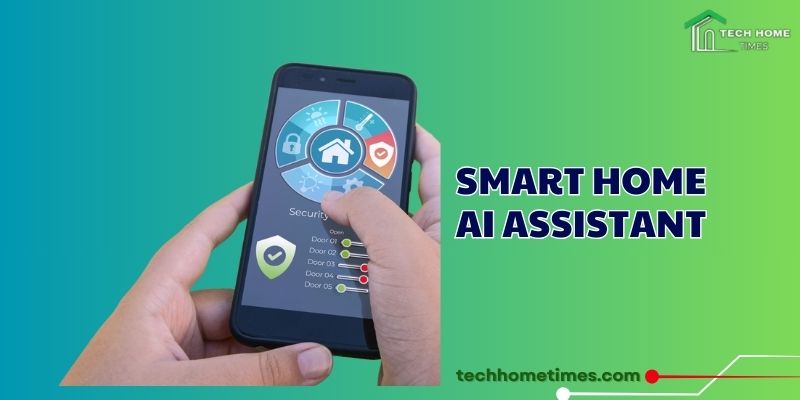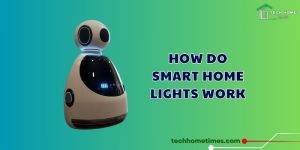The Power of a Smart Home AI Assistant

What makes a smart home AI assistant so transformative? It’s the intelligent force that orchestrates your home, turning it into a responsive, personalized hub of convenience and efficiency. In 2025, it is the heart of connected living, seamlessly managing devices and anticipating needs.
Contents
The Power of a Smart Home AI Assistant

The smart home AI assistant is a sophisticated AI-powered interface that controls and coordinates smart home devices, from lights to appliances, using voice, apps, or automated routines. Unlike basic smart controllers, the smart home AI assistant leverages advanced artificial intelligence—machine learning, natural language processing, and contextual awareness—to understand user preferences, adapt to routines, and make proactive decisions. Devices like Amazon’s Alexa, Google Assistant, or Apple’s Siri, integrated into hubs like the Echo Show or Nest Hub, exemplify this technology, serving as the central nervous system of the home.
The power of the smart home AI assistant lies in its ability to simplify complex tasks and personalize experiences. It can interpret nuanced commands like “Make the house ready for guests,” triggering a sequence of actions—adjusting lights, playing music, and unlocking doors. By 2025, with over 500 million smart homes globally, the smart home AI assistant is accessible, with entry-level hubs costing $50, making it viable for urban apartments in Hanoi or rural homes. Its capacity to learn, integrate, and anticipate sets it apart, transforming homes into intuitive spaces that enhance daily life, as seen in its real-world applications.
Demonstrating the Power – Real-World Applications

The smart home AI assistant shines through practical, transformative applications that showcase its versatility across diverse scenarios in 2025.
Morning Routine Optimization in a Tokyo Apartment
In a compact Tokyo flat, a smart home AI assistant (Google Nest Hub) streamlines a professional’s morning. It learns her 7 AM wake-up routine, automatically opening blinds, brewing coffee via a smart machine, and displaying traffic updates on its screen.
The assistant syncs with her calendar, reading out meetings while adjusting the thermostat for a warm shower. This seamless orchestration, triggered by a single “Good morning” command, saves 15 minutes daily, demonstrating the smart home AI assistant’s power to enhance efficiency in fast-paced urban settings.
Elderly Care in a Sydney Suburb
In a multigenerational Australian home, an Amazon Echo Show serves as a smart home AI assistant for an elderly resident. It responds to voice commands like “Call my daughter,” connecting via video without navigating apps, crucial for limited mobility.
The assistant monitors smart sensors for falls, sending alerts to family, and reminds the resident of medication times. By integrating with smart lights to brighten paths at night, it reduces risks, showcasing the smart home AI assistant’s role in fostering independence and safety.
Eco-Conscious Living in a Copenhagen Home
In a Danish eco-home, a smart home AI assistant (Apple HomePod) optimizes energy use. It analyzes solar panel output and weather data, running appliances like washers during sunny hours to maximize renewable energy.
The assistant adjusts smart blinds to trap heat in winter, cutting heating costs by 20%. It also suggests eco-friendly routines, like lowering water heater temperatures, via its app. This application highlights the smart home AI assistant’s ability to drive sustainability, aligning with Denmark’s green initiatives.
These examples illustrate how the smart home AI assistant adapts to varied needs—efficiency, care, and sustainability—proving its transformative impact across global contexts.
The Underlying Technologies Empowering the AI Assistant

It derives its power from a suite of advanced technologies that enable its intelligence, integration, and responsiveness in 2025. These include:
NLP allows the smart home AI assistant to understand and respond to complex voice commands. Enhanced by generative AI, assistants like Alexa interpret colloquial phrases like “It’s chilly in here,” raising the thermostat. Multilingual support, including Vietnamese, ensures accessibility in diverse markets, making NLP a core driver of user interaction.
ML enables the assistant to learn from user data—routines, preferences, or sensor inputs—refining its actions over time. For instance, if you frequently dim lights at 8 PM, the smart home AI assistant automates this, reducing manual commands. ML also predicts needs, like pre-heating a home based on your commute, enhancing efficiency.
Integrated cameras and sensors provide contextual awareness. It uses motion sensors to trigger lights or cameras with facial recognition to personalize responses, such as greeting specific family members. In 2025, edge AI processes this data locally, boosting privacy and speed, critical for security applications.
Protocols like Matter, Zigbee, and Wi-Fi 7 ensure seamless device integration. The smart home AI assistant communicates with diverse brands—Philips Hue, Ecobee, or Samsung – via a unified platform, eliminating compatibility issues. Low-latency 5G enhances real-time control, vital for large homes or remote access.
Cloud computing powers complex tasks, like analyzing weather for energy optimization, while edge computing handles on-device processing for instant responses, such as opening a smart lock. This hybrid approach ensures the smart home AI assistant is both powerful and responsive, even during internet outages.
These technologies collectively empower the smart home AI assistant to deliver intuitive, reliable, and secure performance, laying the groundwork for its future evolution.
The Future Landscape

The smart home AI assistant is poised for remarkable advancements, with trends and challenges shaping its trajectory beyond 2025:
- By 2030, assistants will sync with wearables to adjust environments based on biometrics, like heart rate or sleep quality. A smart home AI assistant might dim lights if it detects stress, enhancing wellness, but requires robust privacy safeguards to prevent data misuse.
- AR glasses will enable visual control, letting users point at devices to adjust settings via the smart home AI assistant. This immersive interaction will simplify management but demands affordable AR hardware to scale adoption.
- Assistants will optimize renewable energy, coordinating solar panels and batteries to achieve net-zero homes. This trend aligns with Vietnam’s green initiatives but faces challenges in retrofitting older homes, requiring modular smart home AI assistant solutions.
- As AI collects sensitive data, ensuring ethical use is critical. Transparent data policies and user consent for features like facial recognition will build trust in the smart home AI assistant, while regulatory frameworks evolve to protect privacy.
- Affordable, multilingual assistants will expand in emerging markets like Vietnam, but manufacturers must address cost barriers (advanced hubs cost $200+) and localize features, such as air quality monitoring for urban pollution, to maximize the smart home AI assistant’s impact.
The future of the smart home AI assistant is bright, promising hyper-personalized, sustainable homes, provided challenges like privacy and affordability are addressed through innovation and policy.
To Tech Home Times, the smart home AI assistant is a transformative force, harnessing AI to create homes that are intuitive, efficient, and deeply personal. Through real-world applications, advanced technologies, and a promising future, the smart home AI assistant redefines connected living in 2025.






